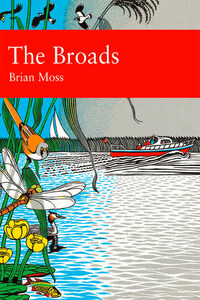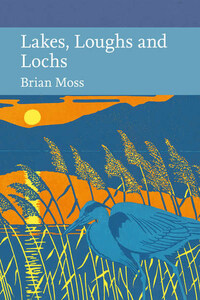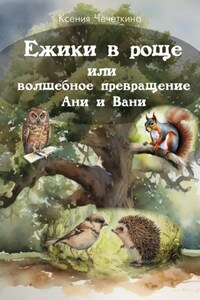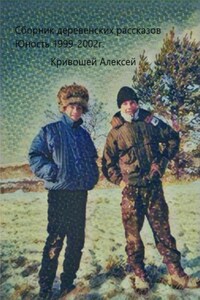Collins New Naturalist Library89
Sarah A. Corbet ScD
S.M.Walters, ScD, VMH
Prof. Richard West, ScD, FRS, FGS
David Streeter, FIBiol
Derek A. Ratcliffe
The aim of this series is to interest the general reader in the wildlife of Britain by recapturing the enquiring spirit of the old naturalists. The editors believe that the natural pride of the British public in the native flora and fauna, to which must be added concern for their conservation, is best fostered by maintaining a high standard of accuracy combined with clarity of exposition in presenting the results of modern scientific research.
Cover Page
Title Page
Editors
Editorsâ Preface
Authorâs Foreword and Acknowledgements
Part I Hunter, Pirate, Marshman, Monk
1 The Broads, an Overview
2 Before the Broads
3 River and Catchment
4 Pristine Broadland â Floodplain and Estuary
5 Invasion and Settlement
Part II Cutter, Digger, Toiler, Reeve
6 Medieval Broadland and Modern Fens
7 The Origin and Limnology of the Early Broads
8 Broadland from the Normans to Victoria
Part III Gunner, Yachtsman, Wherryman, Naturalist
9 The Development of the Grazing Marshes
10 The Rise of Profits, the Start of Decline?
11 War and its Consequences
12 Developments in the Broads and Rivers
13 Changes in the Reedswamps and Fens
14 Drainage and Threats to the Grazing Marshes
Part IV Officer, Visitor, Minister, Sage
15 The Natural History of Organisation Man in Broadland
16 What Can Be Done? The Current Condition of the Waters and their Restoration
17 The Present State and Management of the Fens and Grazing Marshes
Postscript
Bibliography
Index
Photographic Insert
Copyright
About the Publisher
The Broads of Norfolk and Suffolk have long attracted naturalists by the diversity and interest of the flora and fauna of their wetland habitats. Indeed, their interest stimulated some of the earliest conservation plans and freshwater biology projects. The Broads have also attracted a much wider public by their virtue as an escape from everyday life to a life on water. Add to this the sensitivity of such wetland habitats to the activities of man, and we see the conflicts between conservation, land use, agriculture and tourism. In the earlier New Naturalist of 1965, the doyen of Norfolk naturalists Ted Ellis and his colleagues wrote from their exceptional knowledge of the flora and fauna of the Broads. Much has happened since then in the development of this area, and this book presents a personal approach to these developments, and to the earlier history of Broadland, equally important to the understanding of this remarkable region. The association of historical events with the evolution of Broadland habitats shows in extraordinary detail the sensitive state of the natural history we see today in Broadland, a degree of understanding which is hardly possible in other areas of the British Isles. Much of the recent knowledge comes from the study of freshwater life, the subject of the editions (1951, 1968, 1974) of the New Naturalist Life in Lakes and Rivers, written by T.T. Macan and E.B. Worthington. The present book brings together freshwater biology and conditions, vegetation, fauna and the recent geology into an ecological whole, all against a historical background. The author, Brian Moss, based at the University of East Anglia for many years, has been responsible for much of the new natural history which has enabled the synthesis he describes, a synthesis that is certainly relevant to threatened wetland habitats and their natural history in the wider world. The reader will soon gather and appreciate his enthusiasm and deep knowledge of Broadland natural history and of the social factors affecting its evolution. Those who know the Broads will reap very many new insights, and those who do not will, we are sure, be drawn to the natural history of the Broads by this book.
Writing this book was no chore. My impressionable teens were profitably informed by the classic New Naturalists of Pearsall, Macan & Worthington, Dudley Stamp, Turrill, Russell, Manley and Yonge and I was glad to be invited to join them. They very much celebrated the diversity of British natural history in the spirit in which the series was founded, at a time when they could take it very much for granted. Things are different now. Whereas they could write of man the curious rural inhabitant, I must attend to man the powerful, competitive species in the environment of man the creative and destructive modifier.
You will thus not find here a traditional naturalistâs book, emphasising lots of species, and delighting in the appearance of this or that flower, or the habits of some spectacular bird. The flowers and the birds do not fail to move me and I indulge myself no less than many ecologists, but there are greater urgencies to which the endlessly fascinating system of Broadland should be harnessed. Nor will you find a habitat looked at through rose-coloured spectacles. I have not set out to rival the authors of coffee-table books, nor to be lauded in glossy magazines. I have deliberately used my own photographs accumulated over the years rather than the professional shots available for marketing the area. I have tried to present what a reader might realistically see.









